In the urban settlement, different types of pipes are used for the internal distribution system with various diameters, and many connections in the joints used.
The pipes are made up of various materials like cast iron, wrought iron, steel cement concrete, asbestos, timber, etc.
The cost of the pipe mainly depends upon the capacity of the pipe to bear the internal load of the water and the length of the pipeline.
To reduce the cost, a hydraulic line is kept closer to the pipeline and to minimize the additional pressure at high points, air relief values are used.
To prevent the bursting of the pipes, the surge tank or standpipes are provided at the end of the pipes.
Selection criteria for pipes:
The selection of the pipeline material is based on the following criteria as follows:
- The carrying capacity of the pipe.
- The durability and life of the pipe.
- The nature of the water to be conveyed, i.e. quality of water to be transmitted and its corrosive effects on the material of the pipe.
Different Types of Pipes Used in Drainage system
1.Cast-iron Pipe:
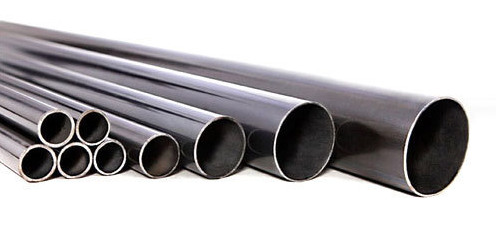
These cast iron pipes are the common types of pipes in water supply schemes, they are highly resistant to corrosion, they need little maintenance and has a long life.
Two different methods, to produce the cast-iron pipes as follows:
Standard sand-molding way:
- In this method, the pipes are molded in a horizontal position also called mewane pipes.
- When these pipes are molded in the vertical position are known as pit-cast pipes.
- After the casting, the pipes are cleaned in a pot of coal, tar, and oil and heated up to 300°F to provide a coal-tar coating which gives them protection against corrosion.
Centrifugal casting or delay process:
- In these pipes, the molten metal is poured into a water-cooled, cylindrical metal mold.
- It is rotated at a very high speed, due to the centrifugal force the homogeneous pipe is cast.
- After this process, the pipe is sent for the operation of annealing.
- Finally, it is tested under hydrostatic pressure and coated with coal-tar to reduce corrosion.
Advantages of cast iron pipe:
- Cast iron pipe has moderate costs.
- They can be jointed.
- It is corrosion-free.
- These pipes are durable and robust.
- They are suitable for giving service connections.
Disadvantages of cast iron pipe:
- These pipes are breakable.
- Their carrying capacity goes on reducing as the life of the pipes increases.
- They cannot stand the pressure of more than 0.7 N/mm2.
- As the size increases, they become cumbersome and awkward to transport.
2.Wrought Iron-Pipes:
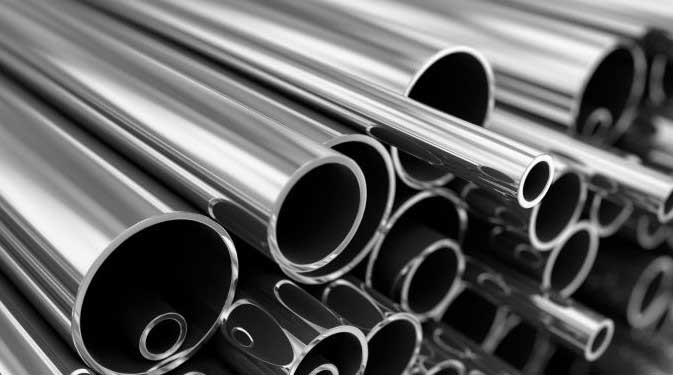
The wrought iron pipe is produced by rolling the flat plates of the metal of the proper diameter and welding the edges.
These pipes are lighter in weight than cast iron pipes, they can easily be cut, threaded, or worked but they are costly and less durable.
As these pipes have a better appearance, they are generally used inside the buildings.
To increase the life of these pipes, they are galvanized with zinc. ( increases the cost of the pipes).
Advantages of wrought iron pipes:
- Wrought iron pipes have excellent weld ability.
- They can be easily forged.
- Also, they are tough.
- It has high tensile strength & high compressive strength.
Disadvantages of wrought iron pipes:
- They cannot be hardened by heating.
- It cannot take a load suddenly.
3.Steel Pipes:

The steel pipes has the same procedure for production of pipes like wrought iron pipes.
Generally, they are used for the main lines, where the water pressure is high and the diameter of the pipes is more.
These types of pipes are more durable than cast iron pipes and they can withstand higher pressure, while they are lighter in weight so they are easy to transport and handling in construction work.
The rate of corrosion is very high, and the maintenance cost is also very high and the joints in the steel pipes are made either by riveting or by welding.
Welded steel pipes with larger diameters like up to 2.43 m or more are used to withstand a heavy earth load over them.
Advantages of steel pipes:
- As these pipes are available in a longer length, fewer joints are required.
- They withstand higher pressure.
- Steel pipes are light weighted, so they are cheap and easy to transport.
Disadvantages of steel pipes:
- Steel pipes need a high maintenance cost.
- They get affected by acidic and alkaline water.
- It is not suitable for final distribution because they need a more extended period for repairs.
- They may get deformed under external or internal pressure.
4.Cement Concrete Pipes:
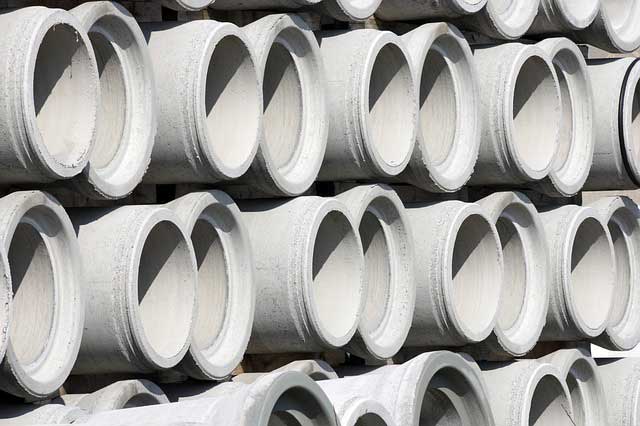
Cement pipes are either precast or cast-in-site.
These pipes are joined by bell and spigot joints up to 60 cm in diameter they can be produced in plain cement concrete but above 60 cm diameter are reinforced concrete.
The RCC piped are produced by two methods:
1. These pipes are having steel bars and mesh reinforcement by pouring concrete by tamping and curing.
2. These pipes having fabricated reinforcement by centrifugal methods and curing in tanks.
The precast pipes are produced in the factories then transported to the site.
In remote areas, they are provided at the site by using local material consist of a welded steel cylinder with high tension wire wound over them.
The concrete is placed around the reinforcement by the centrifugal process, they are stronger than mesh reinforcement and more watertight.
Advantages of cement concrete pipes:
- These concrete pipes working life is about 75 years.
- The construction of the RCC pipe is accessible on the site or factory.
- They have no problem with thermal expansion, so expansion joints are not required.
- As they are heavy, even when they are empty.
- When laid underwater, they do not create the problem of buoyancy.
- When they are laid under the road, they do not fail under the average traffic load.
- They are not affected by any atmospheric or soil action.
Disadvantages of cement concrete pipes:
- Saline and alkaline water influence them.
- The repair work of the RCC pipe is steep.
- Being heavy, the transport cost and the laying cost is higher than other pipes.
- The provision of connection in these pipes is not accessible.
5.Cement-lined Cast Iron Pipes Types:
If the water is to be transported through the pipeline has corrosive material, the cast iron pipes are placed with cement to protect the pipes.
This lining of 1: 2 cement mortar is provided inside the pipes, the thickness of this lining varies between 3 mm and 6 mm.
After the process of coating is completed, it is properly cured they have very little friction.
In the case of cutting or drilling, this lining is not injured.
Advantages of cement- lined cast iron pipes:
- They are highly resistant to friction.
- They are highly durable and practically indestructible.
Disadvantages of cement- lined cast iron pipes:
- Prone to external and internal corrosion.
6.Asbestos Cement Pipes:
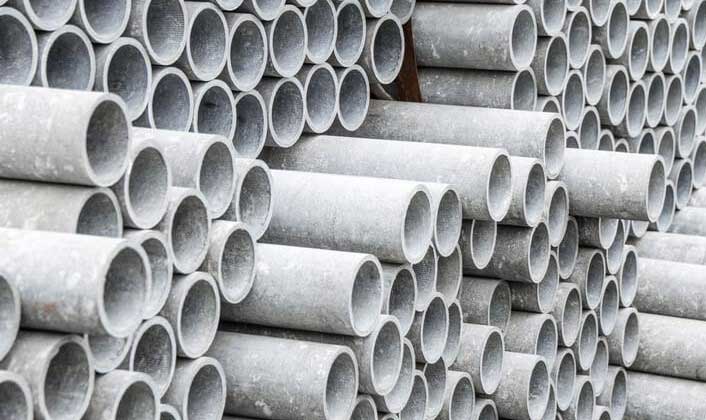
This asbestos pipe is a mixture of cement and asbestos fiber, this mixture is placed over rotating steel drums with uniform thickness and pressed by the steel pressure rolls.
These rolls convert the combination into a dense and homogeneous mass-produced with various diameters, i.e. 5 cm to 130 meters.
They can withstand the pressure from 3.5 kg/cm2 up to 25 kg/cm2, and free from any chemical action from acids, salts, and any other corrosive material.
They are light weighted, thus can be quickly and cheaply transported and handled.
The cutting, fitting, drilling, trapping, or jointing of these pipes is easy, but they are costly and intrinsic, sometimes break or get cracked because they are very brittle.
Mostly these pipes are used as small size distribution pipes.
Advantages of Asbestos cement pipes:
- The inside surfaces of these pipes are very smooth.
- The joints are flexible, water light, and anti-corrosive.
- They are cheap.
- It is light weighted, so easy, and affordable for transportation.
- They are available in various sizes suitable to be used for final water distribution.
Disadvantages of Asbestos cement pipes:
- They cannot hold pressure and resist the vibrations when used under roads.
- It is less durable.
- They cannot be laid in exposed places.
- They can be used to transport water having less pressure.
7.Copper and Lead Pipes Types:
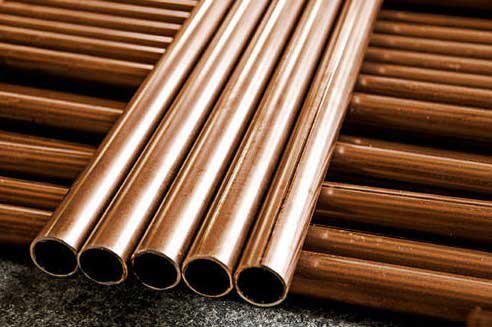
These copper pipe have no problem of corrosion, they can easily bent and carry hot water without sagging.
They are used to carry hot water inside the building and sanitary fittings.
It not used in India because they may cause lead poisoning, if the water is too hot, they may face the problem of sagging.
Advantages of copper and lead pipes:
- Copper and lead are durable metals.
- It is less expensive than steel and lead-free.
- It is easy to extend a long stretch without support.
Disadvantages of copper and lead pipes:
- Copper costs less than steel and more than plastic.
- Copper pipes also face problems with water acidity.
8.Wooden Pipes:
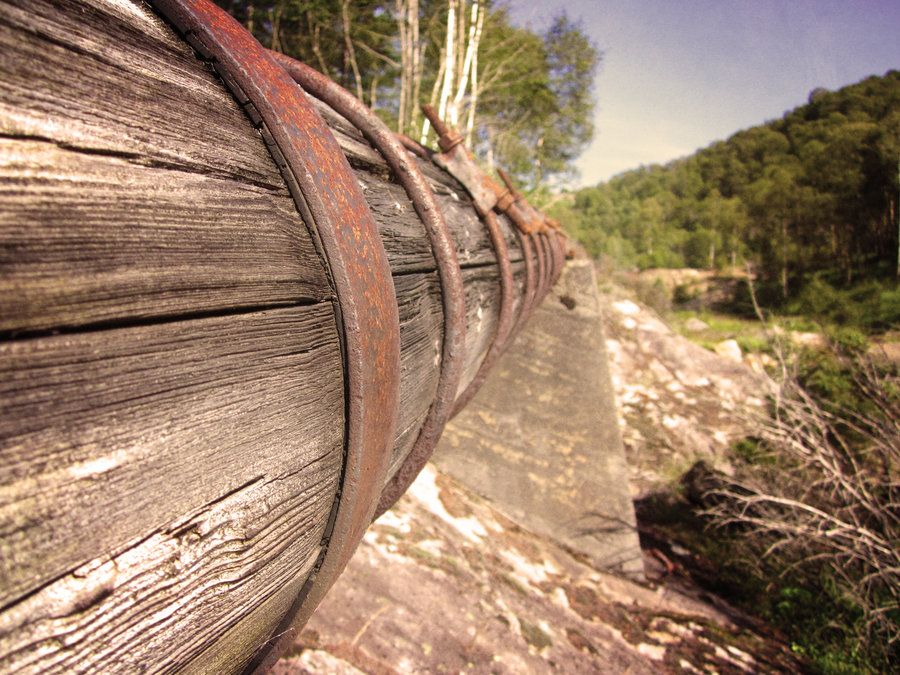
For a very long period, wood is being used to produce the wooden pipes which are of two types as given below:
(a) Banded machine pipes: They are manufactured at the factory and they are of smaller length.
(b) Continuous pipelines: They are assembled at the site only as are more significant in range.
The pipes are produced from selected pine, fur, redwood cypress which are free from fewer knots and other defects.
They are produced up to 7m diameter, and they can withstand the internal pressure up to 11 kg/cm2.
Advantages of wooden pipes:
- As these pipes have less friction, their carrying capacity is higher.
- They can easily be repaired light-weighted/ non-corrosive.
- It can easily be transported and cheaply be laid.
Disadvantages of wooden pipes:
- These pipes leak under high pressure.
- They may break under heavy load.
- They are not suitable for the intermittent water supply system.
9.Plastic Pipes:
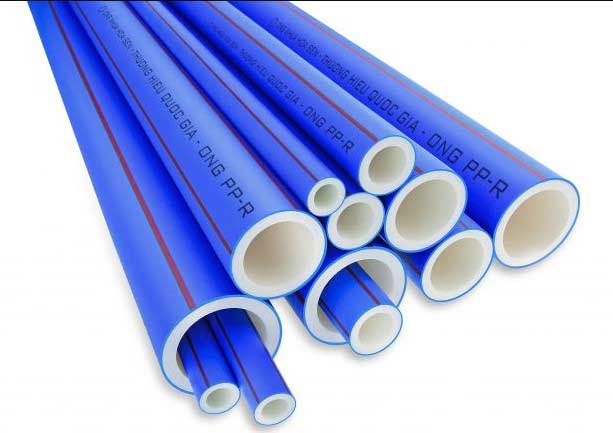
As these plastic pipes are non-corrosive, light-weighted, cheap, and easy to be transported, their use has increased.
Following plastic pipes are available in the market:
A) Low-Density Polyethylene Pipes:
They are available up to 63 mm in diameter, they are flexible so they are preferred for the point-to-point conveyance of water.
Also, we need to have support at closer intervals for the horizontal as well as vertical runs.
They are not used for the internal water supply system.
B) High-Density Polyethylene Pipes:
They are tough and produced up to 1600 mm in diameter.
The small diameter pipes are not used because of the practical difficulties in site jointing.
The large-sized pipe is used to carry the water-effluents as they withstand any corrosive chemical material.
Advantages of plastic pipes:
- Plastic pipes are light in weight, resistant to chemical attack, and available in large lengths.
- They reduce handling, transportation, and installation costs.
- They are resistant to corrosion.
Disadvantages of plastic pipes:
- Worse than tensile strength and firmness.
- Worse resistance.
- Low soft temperature and easy for thermal deformation.
10.Polyethylene Pipes Types:

These types of pipes are generally available in black color, except for nitric acid they can resist any chemical against corrosion.
If they are cracked and may fall if the material like detergents, organic acids, esters, aldehydes, ketone, amides nitro compounds, etc.
Advantages of polyethylene pipes:
- These pipes are corrosion resistant.
- They are fatigue resistant.
- Also has an extended service life.
- They are leak-free joints.
Disadvantages of polyethylene pipes:
- They are susceptible to stress cracking.
- Has lower stiffness than polypropylene.
- High mold shrinkage and poor UV resistance.
11.Rigid or Unplasticized Pipes:

This PVC pipe is used for various purposes like cold water service, internal/external water supply systems, water mains, rain-water harvesting systems, and soil-waste pipe systems, etc.
They are at least three times more rigid than Polyethylene pipes, they are durable and withstand much higher pressure, their joining is easily made by solvent welding.
The whole range of injection-molded matching fitting and specials are readily available.
These pipes are available in three different shades: white/cream color or light to dark grey color or black color.
Advantages of rigid or unplasticized pipes:
- They are cheap.
- It can withstand the water pressure under freezing conditions.
- They are durable and withstand the impact of sunlight or any other atmospheric actions.
- They have low hydraulic resistance.
- It corrosion-free.
- They are lightweight, easy, and economical for transportation.
- They can be easily bent, join, and installed for plumbing.
Disadvantages of rigid or unplasticized pipes:
- They are less resistant to heat.
- They may affect the taste of water.
- It is challenging to get the plastic pipes of uniform composition.
Also read: Types of Pumps, Types of Valves & Types of Buildings
Conclusion:
A pipe is a tubular section or hollow cylinder, but not necessarily of circular cross-section used mainly to convey products from one location to another.
The types of pipes include liquids and gases (fluids), slurries, powders, and masses of small solids.

Related Posts
Rock Quality Designation(RQD): Building Strong Foundations
Spread Footing
Masonry Cement
Plain Cement Concrete
Concrete Efflorescence
Concrete Pile
Stepped Footing
Fineness Modulus of Coarse Aggregates
Difference between Condo and Apartment